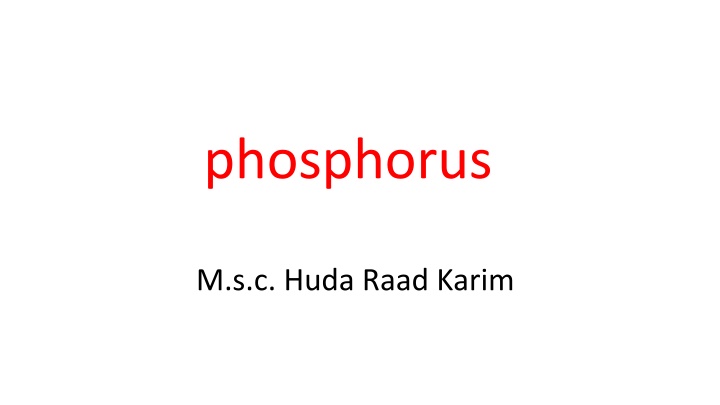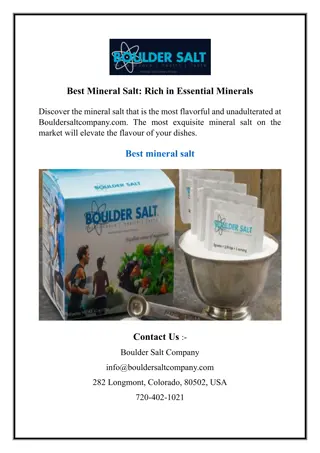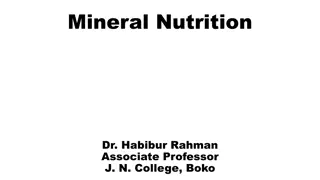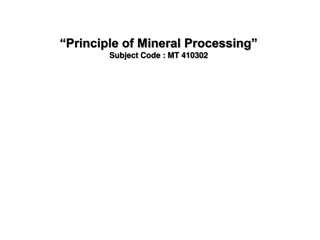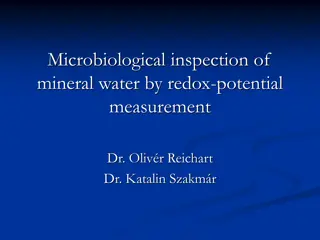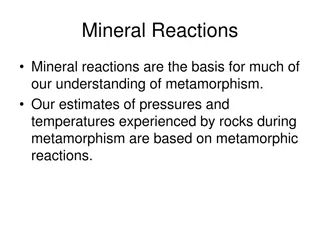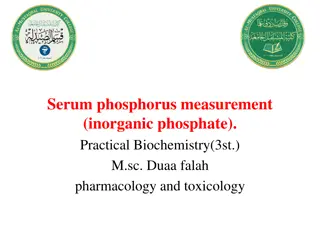Phosphorus: An Essential Mineral for Health
Phosphorus, an essential mineral, is present in various foods and as a dietary supplement. It plays crucial roles in bone health, energy production, and cellular structure. Learn about sources, deficiency risks, and medication interactions related to phosphorus.
Download Presentation

Please find below an Image/Link to download the presentation.
The content on the website is provided AS IS for your information and personal use only. It may not be sold, licensed, or shared on other websites without obtaining consent from the author.If you encounter any issues during the download, it is possible that the publisher has removed the file from their server.
You are allowed to download the files provided on this website for personal or commercial use, subject to the condition that they are used lawfully. All files are the property of their respective owners.
The content on the website is provided AS IS for your information and personal use only. It may not be sold, licensed, or shared on other websites without obtaining consent from the author.
E N D
Presentation Transcript
phosphorus M.s.c. Huda Raad Karim
Phosphorus An essential mineral, is naturally present in many foods and available as a dietary supplement. Phosphorus is a component of bones, teeth, DNA, and RNA . In the form of phospholipids, phosphorus is also a component of cell membrane structure and of the body s key energy source, adenosine triphosphate (ATP). Many proteins and sugars in the body are phosphorylated.
Sources of Phosphorus Sources of Phosphorus Many different types of foods contain phosphorus, including dairy products, meats and poultry, fish, eggs, nuts, legumes, vegetables, and grains The absorption rate for the phosphorus naturally contained in food is 40% 70%; phosphorus from animal sources has a higher absorption rate than that from plants Phosphate additives (e.g., phosphoric acid, sodium phosphate, and sodium polyphosphate) are present in many foods, especially processed food products. These additives are used for such purposes as preserving moisture or color and enhancing and stabilizing frozen foods
Phosphorus Deficiency Phosphorus Deficiency Phosphorus deficiency (hypophosphatemia) is rare in the United States and is almost never the result of low dietary intakes. The effects of hypophosphatemia can include anorexia, anemia, proximal muscle weakness, skeletal effects (bone pain, rickets, and osteomalacia), increased infection risk, paresthesias, ataxia, and confusion . In most cases, hypophosphatemia is caused by medical conditions, such as hyperparathyroidism, kidney tubule defects, and diabetic ketoacidosis . Hyperphosphatemia is a condition in which you have too much phosphate in your blood. Causes include advanced chronic kidney disease, hypoparathyroidism and metabolic and respiratory acidosis. Hyperphosphatemia doesn t have symptoms. Treatment includes making changes to your diet, medications and dialysis.
Interactions with Medications Phosphorus can interact with certain medications, and some medications can have an adverse effect on phosphate levels. Two examples are provided below. Individuals taking these and other medications on a regular basis should discuss their phosphorus status with their health care providers : 1- Antacids Antacids that contain aluminum hydroxide, such as Maalox HRF and Rulox, bind phosphorus in the intestines, and their chronic use for 3 months or longer can therefore lead to hypophosphatemia . These drugs can also aggravate existing phosphate deficiency. Antacids containing calcium carbonate (Rolaids, Tums, Maalox) also decrease instestinal absorption of dietary phosphorus .
2- Laxatives Some laxatives, such as Fleet Prep Kit #1, contain sodium phosphate, and ingesting these products can increase serum phosphate levels . After 13 reports of deaths associated with taking one dose that was higher than recommended on the label of a laxative containing sodium phosphate, FDA issued a warning that these products are potentially dangerous if more than recommended doses are taken, especially in people with kidney disease, heart disease, or dehydration .
Normal Results Adults: 2.8 to 4.5 mg/dL Children: 4.0 to 7.0 mg/dL
